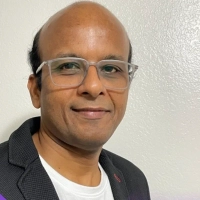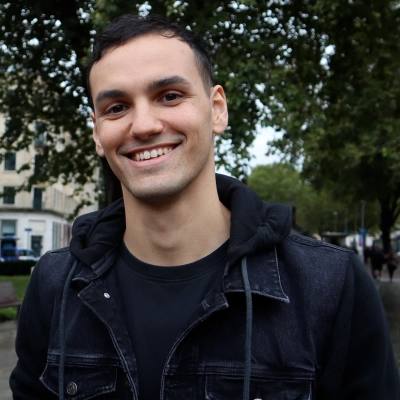Unique Ways Entrepreneurs Discover Their Ideal Target Market
Entrepreneurs face the challenge of identifying their ideal target market. This article presents unique and innovative approaches to market discovery, backed by insights from industry experts. From analyzing real client work to conducting problem-focused listening tours, these strategies offer fresh perspectives on understanding customer needs and uncovering hidden opportunities.
- Analyze Real Client Work for Market Insights
- Shadow Testing Reveals True Customer Needs
- Micro-PPC Campaigns Uncover Hidden Demographics
- Empower Underrepresented Creators Through Live Testing
- Listen Quietly in Online Spaces
- Study DIY Hacks to Validate Market Demand
- Conduct Problem-Focused Listening Tours
- Run Tabletop Interviews for Crisis Simulation
- Use ChatGPT to Analyze Online Conversations
- Observe Daily Operations in Target Businesses
- Leverage IRS Data to Identify Underserved Markets
- Dive Into Psychographics Beyond Basic Demographics
- Experience the Problem Firsthand as a Customer
- Observe Adjacent Communities for Unexpected Insights
- Prioritize Deep Human Conversations Over Automation
- Shadow Restaurant Staff to Guide Feature Development
Analyze Real Client Work for Market Insights
I identified my target market by starting with the women I was already serving through my PR firm and community, then narrowing in on the exact subset who felt most aligned with my mission. Instead of relying solely on surveys or demographic data, I analyzed patterns in real client work: what challenges they brought to me, how they described their struggles in their own words, and which offers generated the strongest emotional response. This helped me see that my ideal audience wasn’t every female entrepreneur, but ambitious, growth-oriented founders who wanted credibility and visibility while avoiding overwhelm.
One unconventional approach I took was listening through unfiltered spaces. I spent weeks in Facebook groups, niche forums, and even comment sections, not to pitch but to observe. I tracked the language, questions, and frustrations that came up repeatedly, which revealed insights that traditional market research would have missed. For example, I noticed that many women didn’t just want PR — they wanted a clear, repeatable framework they could trust. That realization led me to develop my proprietary systems. By grounding my target market in live conversations rather than assumptions, I created messaging and products that felt deeply relevant — and that authenticity has been a key driver of FemFounder’s growth.
 Kristin Marquet
Kristin Marquet
Founder & Creative Director, Marquet Media
Shadow Testing Reveals True Customer Needs
When I was first validating my business idea for my company, I didn’t start with a neatly defined “ideal customer profile” the way textbooks suggest. In fact, my earliest attempts at defining a target market were too broad — any business that needed digital growth. That lack of focus nearly stalled us before we even got moving.
The real clarity came from conversations, not spreadsheets. I started reaching out to founders and operators across different industries, not to pitch, but to ask about their pain points. Some of these conversations happened in coffee shops, others in late-night Zoom calls, and a few even through chance introductions. What I noticed was that while everyone wanted growth, the language they used to describe their struggles was very different. SaaS companies spoke about churn, e-commerce owners talked about customer acquisition costs, and service firms worried about consistency of lead flow. Those nuances helped me realize we couldn’t serve “everyone” — we had to choose where our expertise resonated most.
The unconventional approach that gave me the most insight was something I call “shadow testing.” Instead of running a big campaign or sinking money into research, I offered to work side by side with a few potential clients in short, trial-like projects. I told them upfront: this isn’t about making a sale, it’s about me learning whether what I’m building actually solves your problem. The transparency disarmed people. They opened up more honestly about their challenges because they didn’t feel I was just another consultant trying to close a deal.
One client in particular — a mid-sized e-commerce brand — gave feedback during that trial that completely shifted our positioning. They said, “You’re not just helping us with marketing — you’re helping us rethink how our digital presence aligns with customer behavior.” That insight pushed us to double down on behavioral-driven strategies, which eventually became a cornerstone of how we differentiate Nerdigital.
Looking back, the lesson was clear: identifying your market isn’t about chasing where you think the money is, it’s about listening closely enough to understand who resonates with your approach. And sometimes, the best insights come when you stop trying to sell and start trying to learn.
 Max Shak
Max Shak
Founder/CEO, nerDigital
Micro-PPC Campaigns Uncover Hidden Demographics
After 15+ years of managing campaigns with budgets ranging from $20K to $5M, I learned that your real target market often reveals itself in your campaign data, rather than in surveys or focus groups.
My unconventional approach involved running micro-PPC campaigns (with $500 budgets) across 12 different audience segments simultaneously for healthcare clients. Instead of trying to validate through interviews, I allowed real search behavior and conversion data to tell the story. One campaign I ran for a healthcare organization revealed that 60% of conversions came from family members searching for elderly care, not the elderly patients themselves — completely transforming our messaging strategy.
The breakthrough came from analyzing Google Tag Manager heat maps and user flow data at 2 AM when I noticed people were spending 4+ minutes on our “insurance coverage” page but bouncing from our main service pages. This showed us our real target wasn’t price-sensitive patients, but insurance-focused adult children making healthcare decisions for their parents.
We shifted our entire content strategy and saw conversion rates jump from 2.1% to 8.7% within 30 days. The data doesn’t lie — sometimes your target market validates itself through their actual behavior better than any survey ever could.
 Milton Brown
Milton Brown
Owner, Multi Touch Marketing
Empower Underrepresented Creators Through Live Testing
When we set out to validate our business, we knew our target market couldn’t be defined solely by demographics on a spreadsheet. The conventional playbook would have told us to segment by age, income, or geography. Instead, we looked at cultural influence and community trust as the primary drivers.
The unconventional approach we took was testing live with creators before we had a finished product. On day one of launch, we had 500 creators sign up. We invited them to tell us not only how they wanted to be paid but also how they wanted to be represented to brands. That early data showed us that micro and nano creators, particularly creators of color, weren’t just active; they were outperforming traditional influencers in terms of engagement per follower.
That insight immediately shaped our target market. We doubled down on empowering underrepresented creators, and it paid off in adoption and ROI. The valuable lesson was clear: sometimes your market doesn’t show up in the research deck. It shows up in the lived experience of the people who’ve been overlooked the longest.
 Taylor Humphries
Taylor Humphries
CEO, Ranked
Listen Quietly in Online Spaces
I didn’t start by building a perfect product or writing a long business plan. Instead, I began by talking to real people. I wanted to know what they struggled with, what kept them up at night, and what they secretly wished someone would solve for them. I quickly realized that the most valuable insights come from raw, unfiltered conversations with your audience.
One unconventional approach I took was showing up in spaces where my potential clients were already engaging online, not to pitch anything, but to listen. I would join small, private groups, sit back, and observe the language they used, the way they described their frustrations, and how they celebrated wins. I even started sharing tiny pieces of my thinking just to see who resonated.
That early, quiet listening taught me more about their real desires than any textbook approach ever could. It helped me shape a program that wasn’t just about making money, but about giving creators a clear path to freedom and impact. That deep understanding of the audience from the very beginning made everything else easier because I knew exactly who I was building for. It was like having a map before starting a journey.
 Robert Roth
Robert Roth
CEO, Pragmatic Business
Study DIY Hacks to Validate Market Demand
When we were validating the business, I didn’t start with customer surveys or a focus group — those usually give you the answers people think they should say. Instead, I looked for what people were already hacking together for themselves. My logic was simple: if someone’s cobbling together a makeshift solution, it usually means the pain point is real enough that they won’t wait for something polished.
So I spent hours lurking in Reddit threads and niche Discord servers where graduate students and professionals were openly admitting how they handled heavy reading loads. Many of them weren’t using “study tools” at all — they were pirating text-to-speech apps, recording themselves reading PDFs, or even hiring freelancers on Fiverr just to turn dense academic papers into audio. That was my lightbulb moment: they were already proving the market existed, even if no one had built a clean, reliable product for it yet.
The unconventional part wasn’t just finding them, but deliberately treating those DIY hacks as my real competitors. Instead of looking at other edtech companies, I compared our product against the messy workflows people had cobbled together in private. That changed everything about how we prioritized features — for example, making sure formatting and mathematical symbols were handled gracefully, because those were the exact pain points users kept complaining about in their hacked-together systems.
That perspective gave us a sharper picture of demand than any survey could have. It also meant we weren’t just validating whether the market existed — we were validating that people were willing to go to extreme lengths to solve this problem, which is the strongest signal you can ask for as a founder.
 Derek Pankaew
Derek Pankaew
CEO & Founder, Listening.com
Conduct Problem-Focused Listening Tours
When we were validating our business idea, we knew we couldn’t just rely on demographics or a business plan. In our industry, people don’t make decisions based on what’s written on paper. They make them based on trust and a real need. So, we decided to get out of the office and get into the real world.
The one unconventional approach we took was a “Problem-Focused Listening Tour.” Instead of trying to sell a product, we just listened. We went to local commercial garages and workshops, and we simply asked the professionals what their biggest daily frustrations were. We weren’t selling them anything; we were on a mission to find a pain point that was so common and so frustrating that if we could solve it, we’d have a business.
The most valuable insights weren’t about what products they were buying; they were about the problems they were facing. We learned that their biggest frustration wasn’t the cost of a part; it was the cost of the time it took to find the right part and get it delivered on time. That was our “aha” moment.
This validated our entire business idea. We built a company on the promise of solving that exact problem. From an operations standpoint, we created a new inventory and delivery system. From a marketing standpoint, our message became clear: “We’ll get you the right part, right now.” The message resonated because it spoke directly to their biggest pain point. We weren’t guessing; we were providing a solution to a real-world problem.
My advice is that you have to get out of your office and into the customer’s world. Stop trying to sell and start trying to listen. The best business ideas are often hidden in plain sight, in your customer’s biggest frustrations.
 Illustrious Espiritu
Illustrious Espiritu
Marketing Director, Autostar Heavy Duty
Run Tabletop Interviews for Crisis Simulation
When I was validating my healthcare IT idea, I knew my target market couldn’t be defined by broad demographics; it had to be the people bleeding first. Instead of building generic personas, I looked at where the pain was most acute. The Change Healthcare outage served as a wake-up call: 94% of providers reported a financial impact, and two-thirds struggled to even switch clearinghouses. Add in after-hours inbox fatigue and prior authorization bottlenecks, and the picture became clear: independent multi-site groups and revenue cycle leaders were feeling the most pressure.
The unconventional move was running “tabletop interviews.” Instead of pitching features, I walked prospects through a simulated crisis using their own numbers, days cash on hand, denial codes, and message volume. Together, we developed a 90-day contingency plan and assigned a dollar value to the avoided pain. The clients who leaned in, looping in finance, and sharing baselines became my ideal early adopters. It surfaced barriers that standard surveys never catch, such as change-control windows and integration backlogs, and provided me with insight into who would champion us internally.
Examining examples like Aledade, which grew by focusing on independent primary care and demonstrating value through published savings, or Redox, which won loyalty by reducing time-to-integration, I saw the same truth: depth beats breadth.
Based on my analysis of similar situations, I’d tell first-time founders to skip broad surveys and instead stage five to ten tabletop interviews. In these scenarios, the people who co-design solutions with you aren’t just prospects, they’re your true target market, and they’ll stay loyal because you solved the pain they couldn’t afford to ignore.
 Riken Shah
Riken Shah
Founder & CEO, OSP Labs
Use ChatGPT to Analyze Online Conversations
When validating my business idea, I didn’t want to fall into the trap of simply sitting in my own head and assuming I knew what the market wanted. That’s how many founders end up building something no one asked for.
So I flipped the approach. First, I went straight to where people are brutally honest: Reddit threads, social comments, and online discussions. Using ChatGPT as a research assistant, I sifted through thousands of conversations to extract recurring pain points. This gave me a raw, unfiltered look at what people were struggling with in real life.
But I didn’t stop there. We started running what I call “micro-tests” with paid ads. Instead of throwing thousands into a big campaign, I’d spend a few hundred dollars to test 20+ different problem/solution statements as simple ad creatives. Each click was a vote, a quick signal that told us which messages people actually cared about.
The beauty of this approach is that we didn’t need a perfect dataset. This was simply about cutting through the noise, getting real-world signals, and moving fast. Those insights showed us exactly which problems had demand behind them, and they shaped the offers we went on to build.
That process taught me that validation is about listening to the market and allowing data to point the way.
 Ahmad Benny
Ahmad Benny
CEO, Growth Partners Media
Observe Daily Operations in Target Businesses
I went straight into repair shops and spent hours sitting with mechanics and front-office staff, literally watching how they handled job cards, invoicing, and customer calls. That “fly on the wall” approach gave me insights no spreadsheet could give, like how much time was wasted searching for old records or how often customers complained about unclear estimates. One shop owner told me he spent over 12 hours a week chasing paperwork, which became a key data point for us to quantify the problem.
The unconventional move was letting potential users shape our minimum viable product in real time. For example, when we introduced automated service reminders, one early adopter saw customer retention jump 22% in three months, which confirmed we were solving a pain that mattered.
That kind of grassroots validation showed us that our target wasn’t just “auto repair businesses,” it was specifically independent workshops drowning in admin and losing repeat customers. It was messy, time-consuming, and unscalable in the beginning, but it gave us clarity that traditional market research simply can’t match.
 James Mitchell
James Mitchell
CEO, Workshop Software
Leverage IRS Data to Identify Underserved Markets
I dove straight into IRS data, specifically the annual reports showing that over 11 million Americans owe back taxes each year, with the IRS collecting over $68 billion in delinquent taxes annually. That insight made it clear that the demand wasn’t hypothetical; there was already a massive, underserved population struggling with tax debt but hesitant to seek legal help due to fear, confusion, or stigma. By aligning my services directly with these IRS-documented pain points, I avoided guesswork and built a practice around the real, documented needs of taxpayers.
The unconventional move was speaking directly to taxpayers who had liens filed against them, something most firms avoid because it feels “too aggressive.” But instead of pitching services, I listened. Their stories revealed that what they needed most wasn’t just legal representation; it was a partner who could help them navigate the IRS maze without judgment.
That feedback shaped our client-first approach and influenced services like lien/levy removal and hardship programs. It was raw, unfiltered insight that no market research firm could replicate, and it helped us stand apart in a crowded industry.
 Reem Khatib
Reem Khatib
Partner, Tax Law Advocates
Dive Into Psychographics Beyond Basic Demographics
When we first started, our target market seemed obvious: anyone in a deregulated state who wanted to save money on their energy bill. However, we quickly learned it was far more nuanced. We had to figure out who was most likely to switch and why.
Our most unconventional approach was to go beyond basic demographics and dive into psychographics. We didn’t just look at zip codes or income levels. We focused on behavioral data. We analyzed what people were searching for and what questions they were asking. We discovered a key insight: our best customers weren’t always the ones looking for the absolute lowest rate. They were the ones frustrated with their current provider, concerned about unpredictable rate hikes, or interested in green energy options. They were people seeking transparency and control over their energy costs. This shifted our entire focus from just being a rate comparison tool to becoming a trusted resource that helps people understand their options and gives them peace of mind.
 Adam Cain
Adam Cain
VP of Marketing, ElectricityRates.com
Experience the Problem Firsthand as a Customer
When I first started validating my business idea, I didn’t look at the market in the usual way. Most people jump straight into analytics, reports, or surveys. Yes, these tools are useful. However, I wanted to know the user behaviors in real time.
My target market was busy professionals who value both time and experience. I spent time learning where the audience is. I went to networking events, business lounges, and even watched how people booked or waited for services like rides or reservations. This gave me unfiltered insights into their frustrations and what they wished was better.
The unconventional step I took was simple: I became the customer myself. I booked the same services they used, from budget to premium. I paid close attention to how it felt, how smooth or clunky the process was, and where things broke down. Experiencing the problem firsthand made the pain points crystal clear. It wasn’t just theory — it was a lived experience.
I also had casual conversations, not interviews. People open up more when they don’t feel like they’re part of a study. A short chat at a hotel lobby bar or in line at an event revealed more than a formal survey ever could.
This approach gave me two key insights: first, my target market valued reliability over everything else. Second, they wanted simplicity in how they booked or accessed a service. Both became the foundation of my business model.
I believe identifying your target market is less about charts and more about listening closely. Put yourself in the shoes of users, use what they use, and notice the small details. That’s where the best insights often hide.
 Deepika Singh
Deepika Singh
Digital Strategy & Business Analysis Leader | Co-Founder, Digital4design
Observe Adjacent Communities for Unexpected Insights
We defined our target audience by combining data-driven analysis with first-hand testing of users. However, one organic method that provided surprising insights was simply observing users’ behavior in adjacent communities rather than just surveying immediate customers.
Instead of relying on traditional focus groups or demographics, we spent time in online communities where people were already experimenting with creative tools — forums, niche subreddits, and Discord servers. By observing how they expressed their frustrations (such as inability to edit video, lack of personalization, or desire to experiment with AI tools), we discovered use cases we hadn’t initially considered.
The result was that we not only validated the underlying idea but also identified new user groups, including hobbyists and meme creators, in addition to professional content writers. This broadened our market and influenced our initial product features, leading to more rapid adoption.
 Xi He
Xi He
CEO, BoostVision
Prioritize Deep Human Conversations Over Automation
When I validated my business, I didn’t run ads or obsess over algorithms — I sat down and had real conversations with the exact people I wanted to serve. I asked about their struggles, their secret desires, and the gaps no one else was filling. This might sound too simple, but it’s the strategy that’s generated tens of millions of dollars for me — and it will always beat AI, automation, or any “growth hack.” Why? Because true connection and listening can’t be replicated by code.
Entrepreneurs who do the unscalable first — deep, human conversations — reach 7 figures faster than anyone trying to shortcut their way with ads or funnels. You have to know what works before you pour gasoline on it. In 2025 and beyond, the real disruptors will be the ones who put humanity back into business.
Bunny Young
Serial Entrepreneur, A Better Place Consulting LLC
Shadow Restaurant Staff to Guide Feature Development
We didn’t start from zero. We already knew that small and mid-size restaurants were doing well, but they lacked access to the same efficiency tools big chains had. So we dug deeper and spent time in kitchens, shadowed managers during rush hour, and watched workflows firsthand. That’s how we moved from just helping restaurants perform to empowering them to operate at their best-in-class level.
Instead of asking, “What frustrates you?” we asked to be shown. We’d stand beside restaurant operators during service, seeing what they clicked, adjusted, or overlooked in real time. Those observations guided features that didn’t just solve problems but actually created a new standard of ease, efficiency, and profitability.
 Manoj Kumar
Manoj Kumar
Founder and CEO, Orderific

